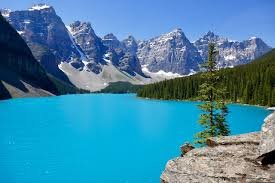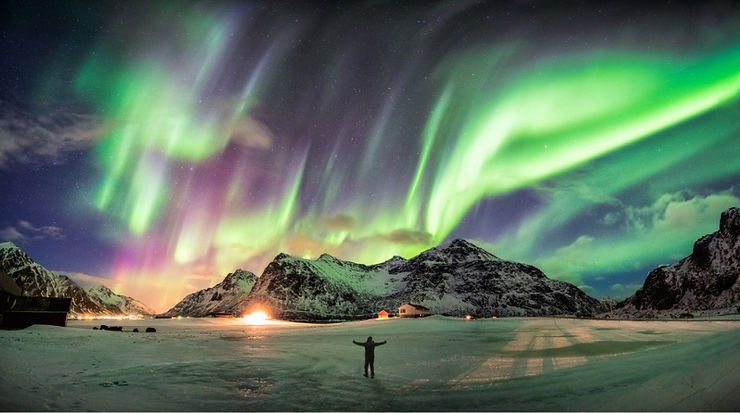Zhangye National Geopark: China’s Rainbow Mountains That Defy Belief
In the heart of northwestern China lies a natural masterpiece that looks more like a painting than a real landscape. Zhangye National Geopark, located in Gansu Province, is famously home to the Rainbow Mountains—vivid, multicolored rock formations that have become a global sensation. With striking layers of red, orange, yellow, and even blue, the Geopark draws thousands of tourists each year, all eager to witness one of nature’s most colorful wonders.
What Makes Zhangye National Geopark So Unique?
Zhangye National Geopark is part of the larger Qilian Mountain range. Its uniqueness lies in the incredible, naturally formed rock formations that appear as if someone splashed buckets of paint across the mountains. These surreal, colorful patterns were not painted by hand, but rather formed over millions of years through the processes of erosion, sedimentation, and tectonic plate movement.
The colors are the result of different mineral deposits. Red sandstone, along with layers of minerals like iron and trace elements, formed over 24 million years ago and were compressed and uplifted by the Earth’s crust. Wind and water then carved these rocks into dramatic peaks, valleys, and ridges, producing a multicolored effect that looks unreal.
A UNESCO-Recognized Geological Wonder
While Zhangye Danxia Landform was officially established as a national geopark in 2011, its beauty has been recognized by geologists and tourists long before that. In 2010, it was listed as a UNESCO World Heritage Site under the category of “China Danxia” landforms—a group of six spectacular geological sites in southern China. Zhangye stands out because of its striking colors and sheer size.
The Geopark covers an area of over 500 square kilometers and features a variety of scenic areas, hiking trails, observation decks, and guided routes. Thanks to conservation efforts and well-planned tourism infrastructure, visitors can explore the park without harming the fragile ecosystem.
Best Time to Visit Zhangye National Geopark
The ideal time to visit Zhangye is between June and September, when the weather is pleasant, and the sunlight enhances the vibrancy of the mountain colors. Sunrises and sunsets offer the most spectacular views, as the low-angle sunlight intensifies the contrast and richness of the hues.
If you’re a photographer or nature lover, aim to reach the park early in the morning or late in the afternoon for the best lighting conditions. During rainy days, the colors may appear duller, so checking the weather forecast beforehand is a good idea.
How to Get There
The city of Zhangye, located in Gansu Province, serves as the gateway to the Geopark. It’s well connected to major Chinese cities like Beijing, Xi’an, and Lanzhou through flights and high-speed trains. From Zhangye city, the Geopark is about 30 to 40 minutes away by car or tourist bus.
There are well-marked routes inside the park, with shuttle buses taking tourists between observation decks and scenic spots. Most visitors spend around half a day exploring the park, though spending a full day gives you more time to enjoy the views at a relaxed pace.
Main Scenic Areas in the Park
Zhangye Geopark features several viewing platforms, each offering unique perspectives of the colorful landforms:
- Qicai Shan (Seven Color Mountain): The most famous section, often featured in photographs and travel magazines.
- Jingxiu Platform: Offers panoramic views ideal for sunset photography.
- Danxia Film and Television Base: A popular filming location due to the dramatic backdrop.
- Binggou Danxia Area: Less colorful but features striking, sculpted cliffs and rock towers.
Each section of the park reveals a different facet of nature’s artistry—from soft rolling hills to sharp ridges and strange stone shapes that resemble castles, pagodas, and animals.
Cultural and Historical Significance
Zhangye is not just known for its geological wonders—it also has historical and cultural roots. The region was once a vital hub on the ancient Silk Road, the trade route that connected China to the West. As a result, Zhangye became a melting pot of cultures, religions, and ethnicities.
In addition to the Geopark, visitors can explore Zhangye Dafo Temple, home to China’s largest reclining Buddha statue made of clay, and other historic relics that reflect the city’s importance in Chinese history.
Sustainable Tourism and Conservation
Due to the delicate nature of the Danxia formations, strict regulations have been introduced to protect the site from erosion and human damage. Walking on the mountains is prohibited; visitors must use the designated paths and observation decks.
Tourism here is well-regulated to minimize environmental impact. Trash bins are placed throughout the park, and guides encourage responsible behavior. Visitors are also educated on the science and significance of the landforms, making the experience both enjoyable and enlightening.
Why Zhangye National Geopark Should Be on Your Travel Bucket List
There are many beautiful places in the world, but few match the surreal, jaw-dropping wonder of Zhangye National Geopark. Whether you’re an adventurer, photographer, geologist, or simply someone who appreciates nature’s artistry, this rainbow-hued landscape offers an unforgettable experience.
It’s not just a place to take amazing photos—it’s a place to pause and reflect on the power of nature. These rock formations have been in the making for millions of years, silently shaped by forces far beyond our control. Standing before them reminds us of the Earth’s beauty, patience, and timeless creativity.
If you are planning a journey to China or exploring world wonders, Zhangye National Geopark deserves a top spot on your itinerary.


